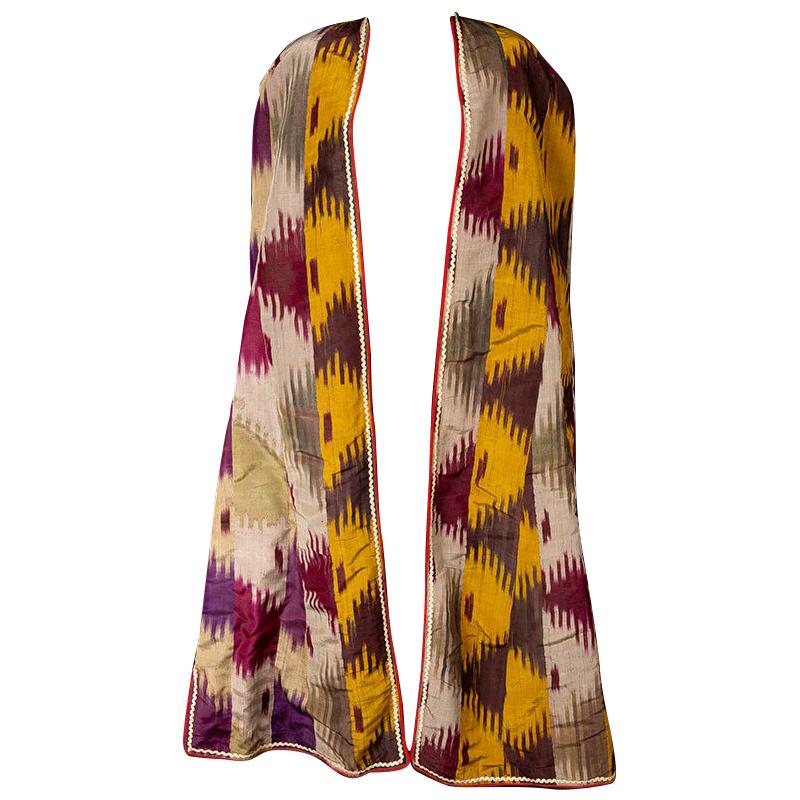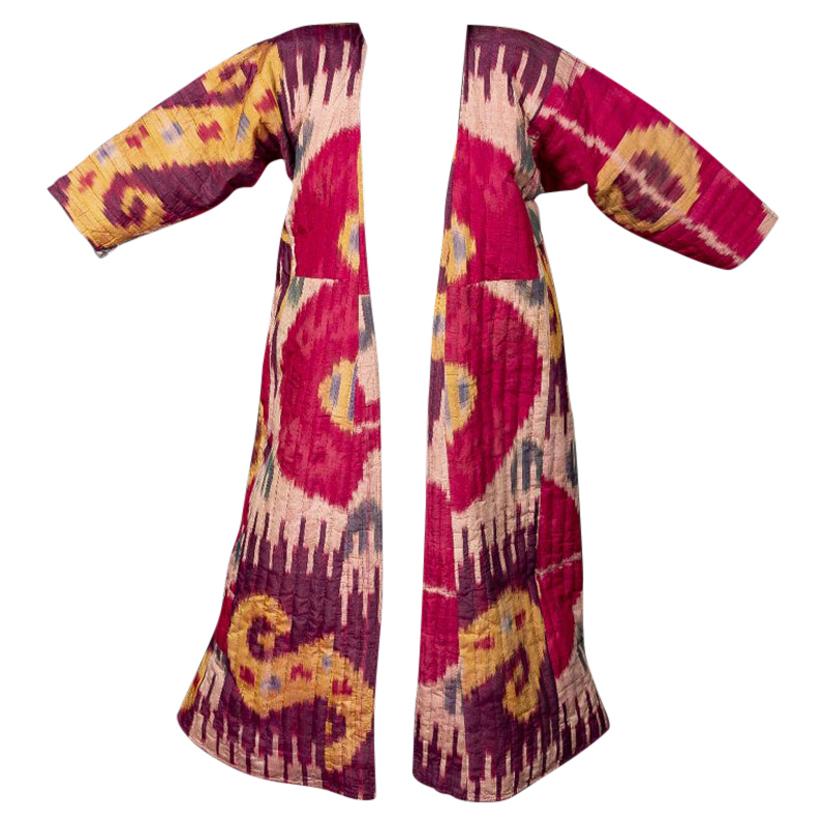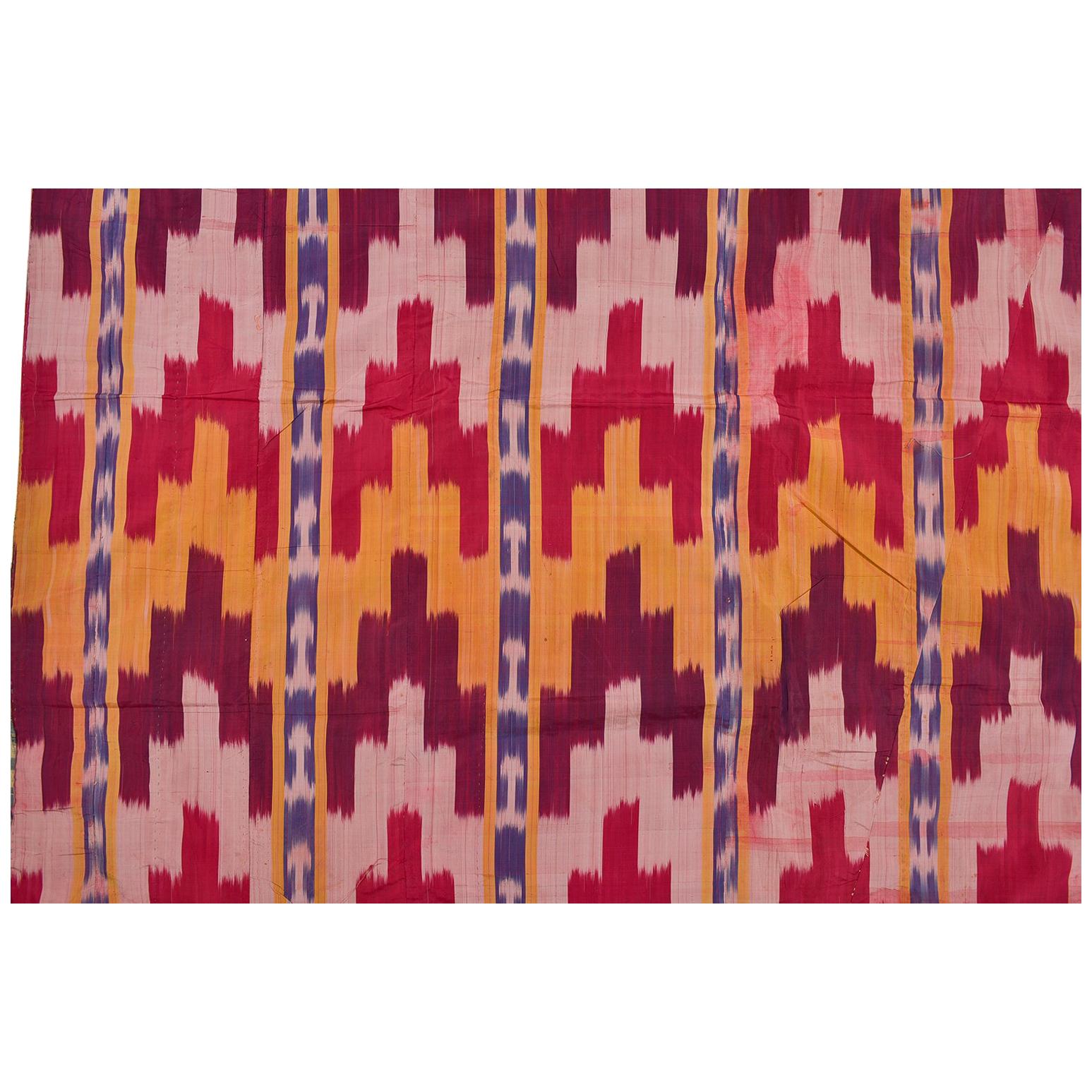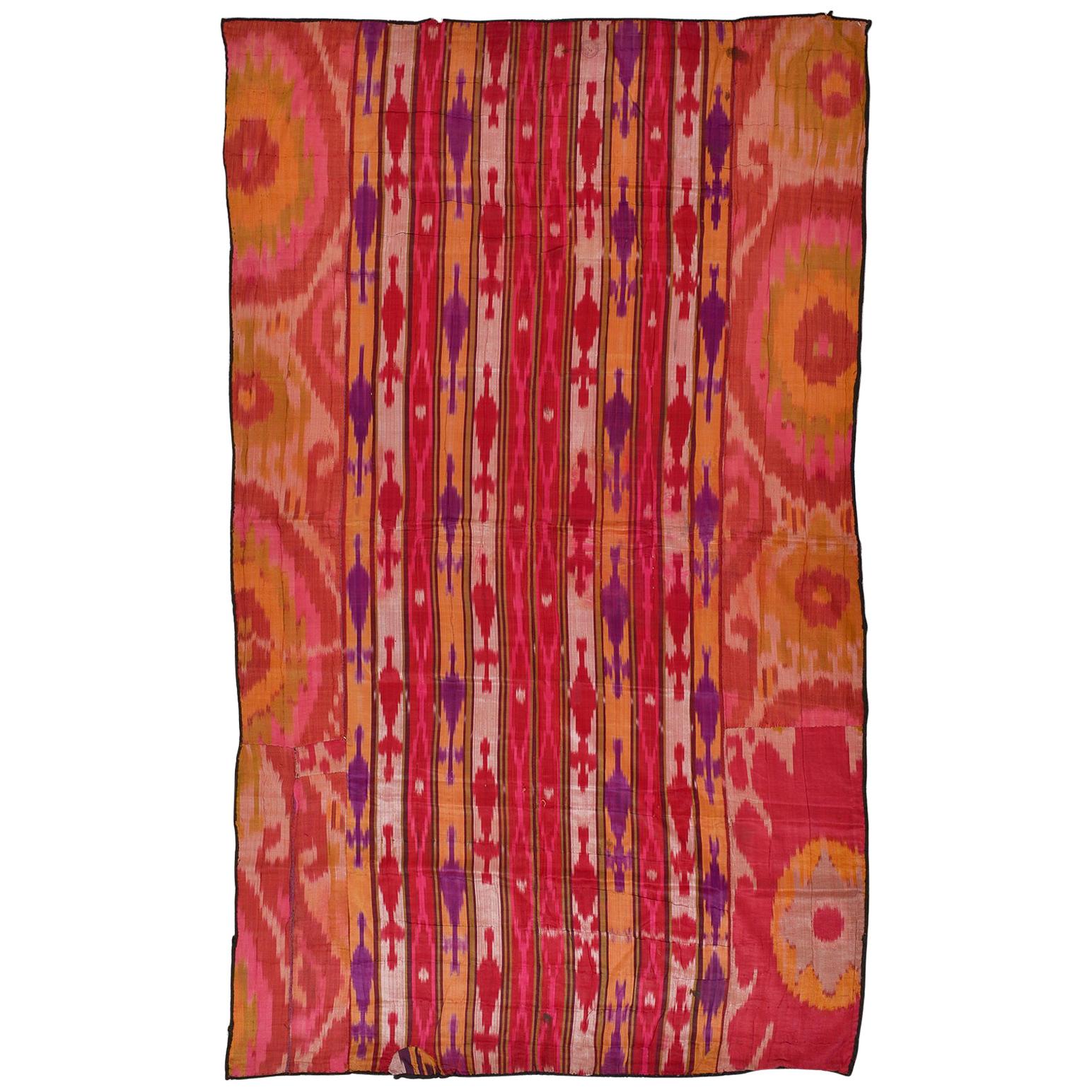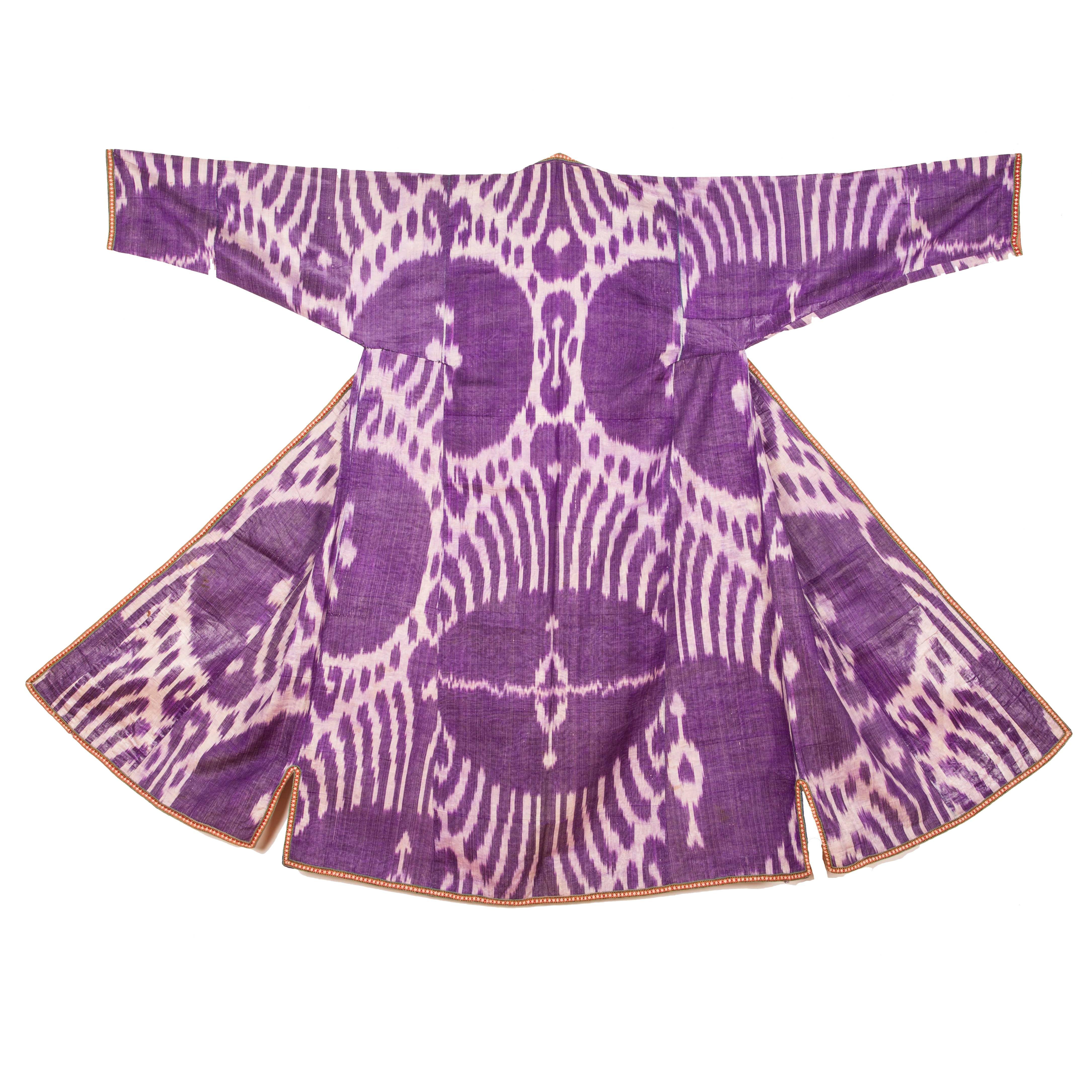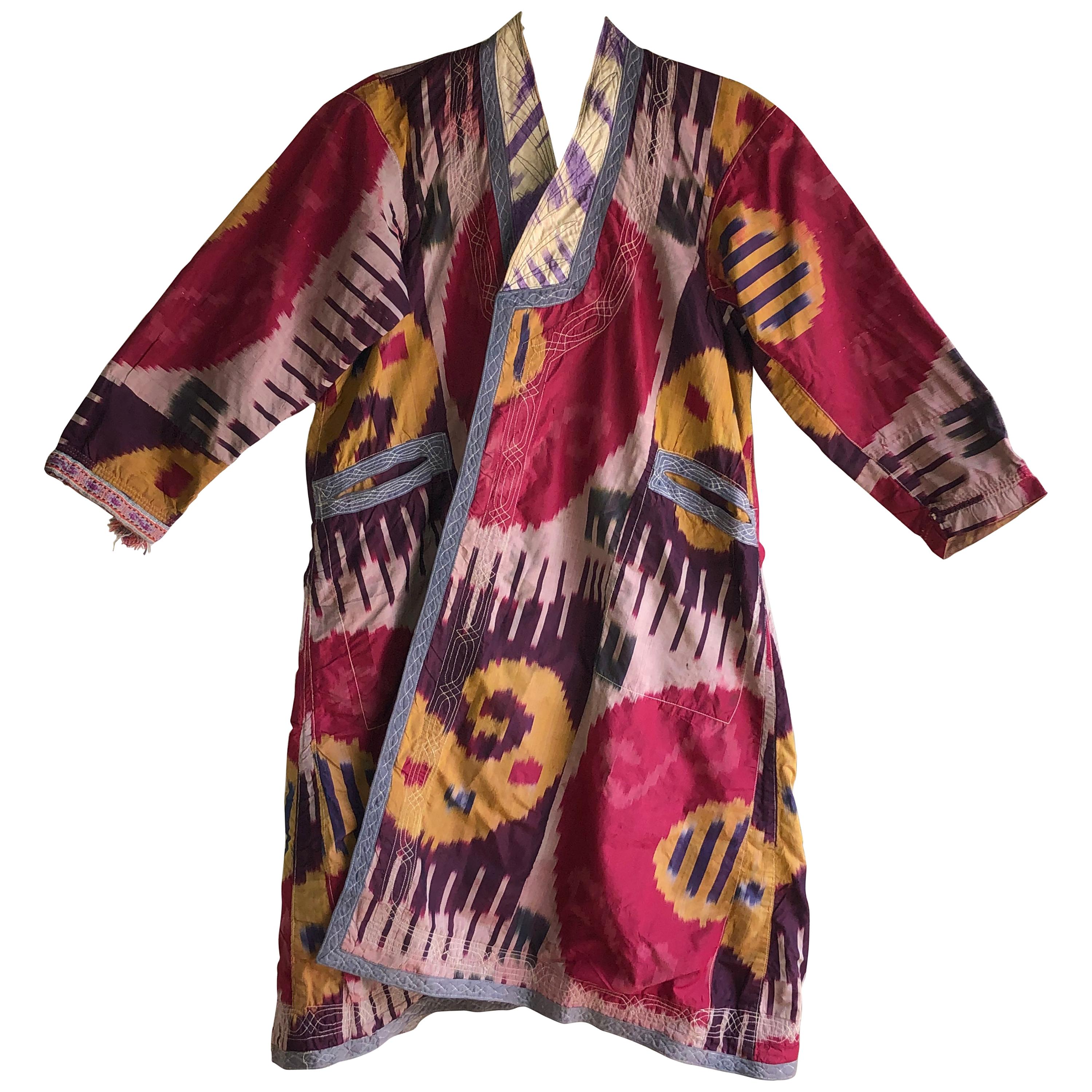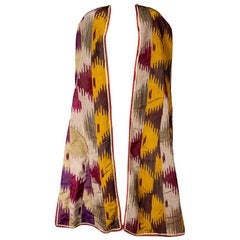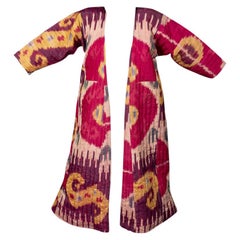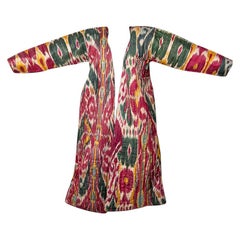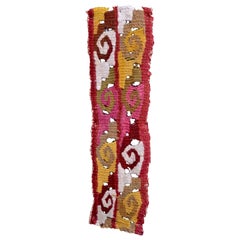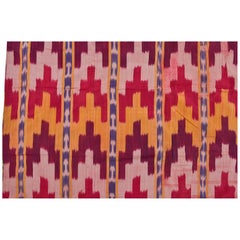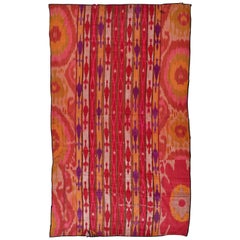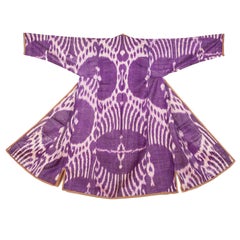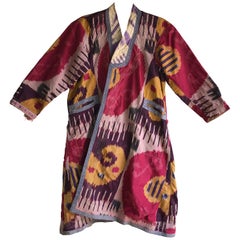Want more images or videos?
Request additional images or videos from the seller
1 of 9
Ikat Chyrpy, Central Asia
$1,450
£1,089.28
€1,256.12
CA$2,012.06
A$2,235.85
CHF 1,171.61
MX$27,418.68
NOK 14,943.17
SEK 14,057.99
DKK 9,375.13
Shipping
Retrieving quote...The 1stDibs Promise:
Authenticity Guarantee,
Money-Back Guarantee,
24-Hour Cancellation
About the Item
Striking hand-woven chyrpy with a checkered triangle pattern in vibrant colours. Women in Uzbekistan and Northern Afghanistan wore this outdoor veiling garment (paranja/chrypy) in traditional colours of dark blues, green and grey – colours considered appropriately modest by local tradition. The beautiful rich colours are all natural and applied into the design with a master’s touch. They are worn over the tunic in cloak-fashion, covering the head and shoulders, with the long vestigial sleeves hanging down the back and joined by an embroidered band. It is in excellent condition. a masterpiece.
By the end of the 19th century, wealthy women began wearing silk ikat and striped fabrics (prior to this, only members of the court were allowed), and coats were produced in bright colours – yellow, light blue and even pink.
Ikat weaving has emerged from different parts of the world independently, however it is ikat from Uzbekistan, defined as abrabandi, meaning “bound cloud” which is the most captivating. The word ‘ikat’ comes from the Malaysian word ‘mengikat’ or ‘to tie’, because the loose threads are tied into bundles using grasses or wax-treated cotton to specify where the dye is able to sink in and color the thread. The threads are dyed before they are woven into the textiles.
A characteristic of ikat textiles is an apparent “blurriness” to the design. The blurriness is a result of the extreme difficulty the weaver has lining up the dyed yarns so that the pattern comes out perfectly in the finished cloth. The blurriness can be reduced by using finer yarns or by the skill of the craftsperson. Ikats with little blurriness, multiple colours and complicated patterns are more difficult to create and therefore often more expensive. However, the blurriness that is so characteristic of ikat is often prized by textile collectors.
The Silk Road was a network rather than a single highway, at the heart of which sat what we know today as Uzbekistan, where mountain and steppe meet desert. A succession of empires lost and won by nomadic invaders have left behind a unique melting pot of cultures. Merchants, pilgrims, and envoys were attracted here, not only by trade but also by exchanges in religion, technology and the arts. Where these people met, so too did their ideas and their creativity, one of the most original and visually dramatic examples of Central Asian silk. The clarity, saturation and depth of colour in classical ikats are their greatest artistic strengths. The eye is teased, tickled by the sophistication of the composition and the elegance of the forms.
Measurements: 146 cm H.
- Dimensions:Height: 57.48 in (146 cm)Width: 78 in (198.12 cm)Depth: 1 in (2.54 cm)
- Materials and Techniques:
- Place of Origin:
- Period:
- Date of Manufacture:19th Century
- Condition:
- Seller Location:San Pedro Garza Garcia, MX
- Reference Number:Seller: IS-0431stDibs: LU3172324340402
About the Seller
3.7
Vetted Professional Seller
Every seller passes strict standards for authenticity and reliability
1stDibs seller since 2017
24 sales on 1stDibs
Typical response time: 1 to 2 days
- ShippingRetrieving quote...Shipping from: San Pedro Garza Garcia, Mexico
- Return Policy
Authenticity Guarantee
In the unlikely event there’s an issue with an item’s authenticity, contact us within 1 year for a full refund. DetailsMoney-Back Guarantee
If your item is not as described, is damaged in transit, or does not arrive, contact us within 7 days for a full refund. Details24-Hour Cancellation
You have a 24-hour grace period in which to reconsider your purchase, with no questions asked.Vetted Professional Sellers
Our world-class sellers must adhere to strict standards for service and quality, maintaining the integrity of our listings.Price-Match Guarantee
If you find that a seller listed the same item for a lower price elsewhere, we’ll match it.Trusted Global Delivery
Our best-in-class carrier network provides specialized shipping options worldwide, including custom delivery.More From This Seller
View AllIkat Chyrpy, Central Asia
Located in San Pedro Garza Garcia, Nuevo Leon
Spectacular hand-loomed Chyrpy with a checkered pattern, finished with a remarkable white wavy cotton edging. Women in Uzbekistan and Northern Afghanistan wore this outdoor veiling g...
Category
Antique 15th Century and Earlier Asian Antiquities
Materials
Cotton
Beautiful Ikat Munisak, Uzbekistan, 19th Century
Located in San Pedro Garza Garcia, Nuevo Leon
A beautiful Ikat Munisak – a woman’s uzbek robe – in traditional pomegranate design symbolizing fertility. It has a square patch in Magenta with a flower mo...
Category
Antique 15th Century and Earlier Asian Antiquities
Materials
Cotton
Magnificent Silk Ikat Chapan, Uzbekistan, Xix Century
Located in San Pedro Garza Garcia, Nuevo Leon
Ikat Chapan – a man’s uzbek coat – Style Robe with exceptionally rich colour and dynamic pattering. Viewers may become lost in this ikat’s intertwining mot...
Category
Antique 19th Century Uzbek Antiquities
Materials
Cotton
Vivid Huari Pre-Columbian Textile, Peru, Ex Ferdinand Anton
Located in San Pedro Garza Garcia, Nuevo Leon
Pre-Columbian textile fragment with wave like patterns woven in bright colors. Framed in a black shadow box.
It is a wonder to behold antiquities such as a pre-Columbian textiles, an authentic piece of art that has been preserved for centuries and that survives generation after generation. Textiles are infinitely more delicate than wood, metal, or rock artifacts - so the existence of these pieces after hundreds and thousands of years is exceptional. These textiles maintain their vibrant colors, natural threads, and their unique, historical designs.
Provenance: This textile comes from the collection Ulrich Hoffmann, Stuttgart and former collection of the archaeologist Ferdinand Anton...
Category
Antique 15th Century and Earlier Peruvian Pre-Columbian Antiquities
Materials
Textile
Pre-Columbian Nazca Textile, Stepped Zig-Zag Design, Nazca Peru 200-400 AD
Located in San Pedro Garza Garcia, Nuevo Leon
Complete Pre-Columbian Nazca textile with stepped zig-zag design in yellow, ochre red, and brown/black shades with yellow fringes.
Category
Antique 15th Century and Earlier Peruvian Pre-Columbian Antiquities
Materials
Textile
Pre-Columbian Chimu Textile, Meander Design and Fringe, Peru circa 900 to 1300AD
Located in San Pedro Garza Garcia, Nuevo Leon
A woven textile shirt of rectangular form having small rectangular panels on the front and back, all with fringed borders, and open head slit in center. Decorated with zigzag rows of...
Category
Antique 15th Century and Earlier Peruvian Pre-Columbian Antiquities
Materials
Textile
You May Also Like
Rare Antique Silk Ikat Fergana, Dubbed with Other Silk Ikat
Located in Alessandria, Piemonte
Rare antique Fergana Uzbekistn silk ikat, dubbed with other silk light blue ikat - There is a rich bibliography on these Turkmenistan textiles -
Hanging on the wall like a tapestry, ...
Category
Antique Late 19th Century Uzbek Other Textiles
Materials
Silk
$3,530 Sale Price
30% Off
Antique Silk Bokara Ikat Textile
Located in Alessandria, Piemonte
Very antique Central Asia silk Ikat, backed on original linen, suitable for wall, bed, table. Particular design, part of my personal collection.
(Interesting price for closing activi...
Category
Antique Late 19th Century Turkmen Other Tapestries
Materials
Silk
Late 19th-Early 20th Century Uzbek Ikat Chapan
Located in Istanbul, TR
A very strong graphic example to the period.
Sleeve to sleeve: 64.5''.
Neck to hem: 50.7''.
Chapan has no lining.
Category
Antique Late 19th Century Uzbek Tribal Central Asian Rugs
Antique Ikat Dyed Uzbek Silk Robe
Located in Delray Beach, FL
Beautiful bright and colorful Antique Ikat silk Dyed Uzbek Robe. Has minor wear and tear shown in photos. Colors: Fuchsia, light pink, purple, yellow and bl...
Category
Vintage 1920s Uzbek Textiles
Materials
Silk, Cotton
$450 Sale Price
35% Off
Old IKAT Tapestry
Located in Alessandria, Piemonte
Old beautiful IKAT red and Bordeaux, with a simply geometrical design: perfectly modern taste.
Suitable everywhere: over an armchair, at the bottom of the bed, on the wall. On the sh...
Category
Mid-20th Century Indonesian Other Tapestries
Materials
Cotton
Early 20th Century Central Asian Ikat
Located in London, GB
A large panel of Central Asian Ikat, decorated with diffuse colours in red, aubergine, and pale cream, in a continuous abstract pattern, bordered with lime green silk, stretched and ...
Category
20th Century Uzbek Textiles
Materials
Silk
